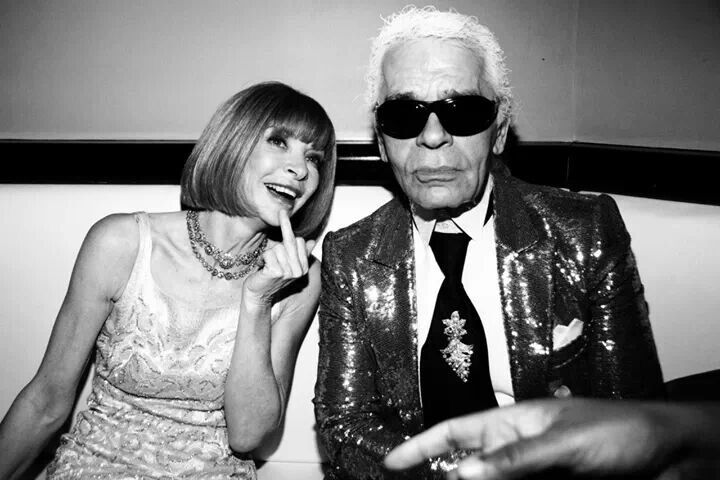The influence of Anna Wintour: How the editor-in-chief of Vogue transformed the fashion world

Anna Wintour is undoubtedly one of the most influential figures in the fashion world. Having led the American edition of Vogue since 1988, she has not only shaped the magazine into a global symbol of style, but has also had a profound impact on the fashion industry as a whole. Known for her sharp eye, her unflappable demeanor, and her undeniable presence, Wintour is a silent force behind many of the trends and changes that define modern fashion.
But how exactly did Anna Wintour transform the fashion world? Let's explore her journey and legacy, and how her style and vision helped lay the foundation for the industry as we know it today.
The power of Anna Wintour in the "fashion system"

Anna arrived at Vogue at a critical moment for fashion, at a time when the industry was beginning to expand beyond traditional fashion weeks and runway shows. Under her leadership, Vogue became more than just a fashion magazine: it became a platform of influence, determining what would be "accepted" or "desired" in the fashion world. Anna understood the central role of media in creating a global narrative, and her editorial dominance helped solidify Vogue as the epicenter of the fashion industry.
She was responsible for launching new fashion stars, including designers like Marc Jacobs and Alexander McQueen, and made Vogue a key vehicle for the growth of established names like Prada, Gucci, and Chanel. Her ability to identify trends and steer the magazine toward the right themes helped cement Vogue as a timeless style reference.
The evolution of fashion under her vision

In addition to being a great curator of fashion, Anna also played a crucial role in the transition from traditional fashion to the digital age. During the early 2000s, she understood the growing impact of the internet and social media on consumer behavior. This was evident when Vogue began to increase its online presence, embracing fashion blogs, influencers, and later platforms like Instagram, which helped democratize access to the fashion world.
She was also one of the first to support the work of designers like Virgil Abloh and Alexander Wang, embracing the youth and fresh energy they brought to the runway. This marked a contrast with the classic glamour of haute couture.
Personal image and iconic style

Anna Wintour is known for her iconic and unmistakable style. Her perfect bob haircut and dark sunglasses have become symbols of her authority and strong personality. She is the personification of chic minimalism: elegant pieces, perfect cuts, and always with a touch of sophistication. Despite her image seeming rigid, what many don't realize is her ability to add personal touches to her style, like her famous floral coats and dresses, which reflect her elegance and pragmatic approach to fashion.
Her style isn't about following the latest trends, but about building a visual identity that resonates with her role as a leader and innovator in fashion. Anna Wintour is proof that sometimes true style doesn't come from following fleeting fashions, but from creating and maintaining a consistent image over time.
Cultural influence and legacy

Anna Wintour's legacy goes beyond her role as editor-in-chief. She is one of the key figures responsible for building "fashion culture," the one that bridges the world of fashion and entertainment. It was she who helped boost the presence of celebrities on the covers of Vogue and made fashion journalism a powerful business force.
Her influence isn't limited to the pages of the magazine. Anna Wintour has been an advocate for causes such as fashion education and diversity in the industry, which is reflected in the editorial choices and collaborations she has promoted. She also plays a crucial role in events like the Met Gala, one of the industry's largest fundraising events, which has turned fashion celebration into a cultural and media event of global reach.
Anna Wintour and the Met Gala: Fashion and art in perfect harmony

The Met Gala, which takes place every year in New York, is a clear example of Anna's impact on fashion. Under her leadership, the event has transformed from a simple fundraising event into a global spectacle of style and creativity. The event's theme, which changes every year, reflects her ability to unite art, culture, and fashion, inspiring the creation of stunning looks that often push the boundaries of what is considered "acceptable" in the industry.
The Met Gala not only celebrates fashion but also becomes a platform for discussing broader issues, such as the history of art.
Conclusion: The immortal legacy of Anna Wintour in fashion

Anna Wintour is undoubtedly one of the most powerful and influential figures in the fashion world. Her fashion vision, adaptability, and ability to identify what's to come have helped transform Vogue and the fashion industry in ways few could have imagined. She has proven that being a style leader goes beyond what one wears; it's about defining a vision, creating a narrative, and shaping the future of fashion.
With her blend of authority, sophistication, and innovative vision, Anna Wintour remains one of the most relevant and respected figures in the fashion industry.